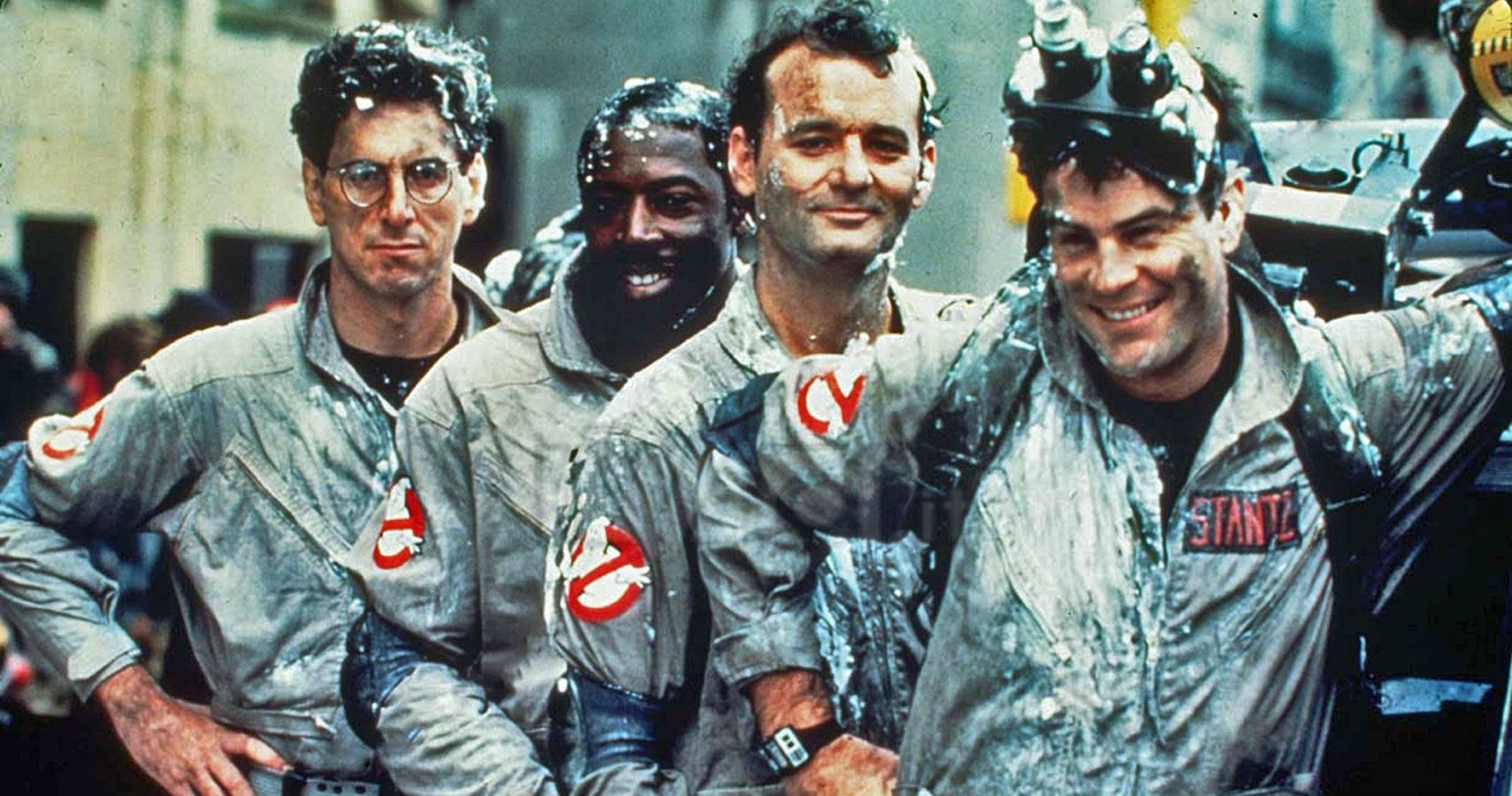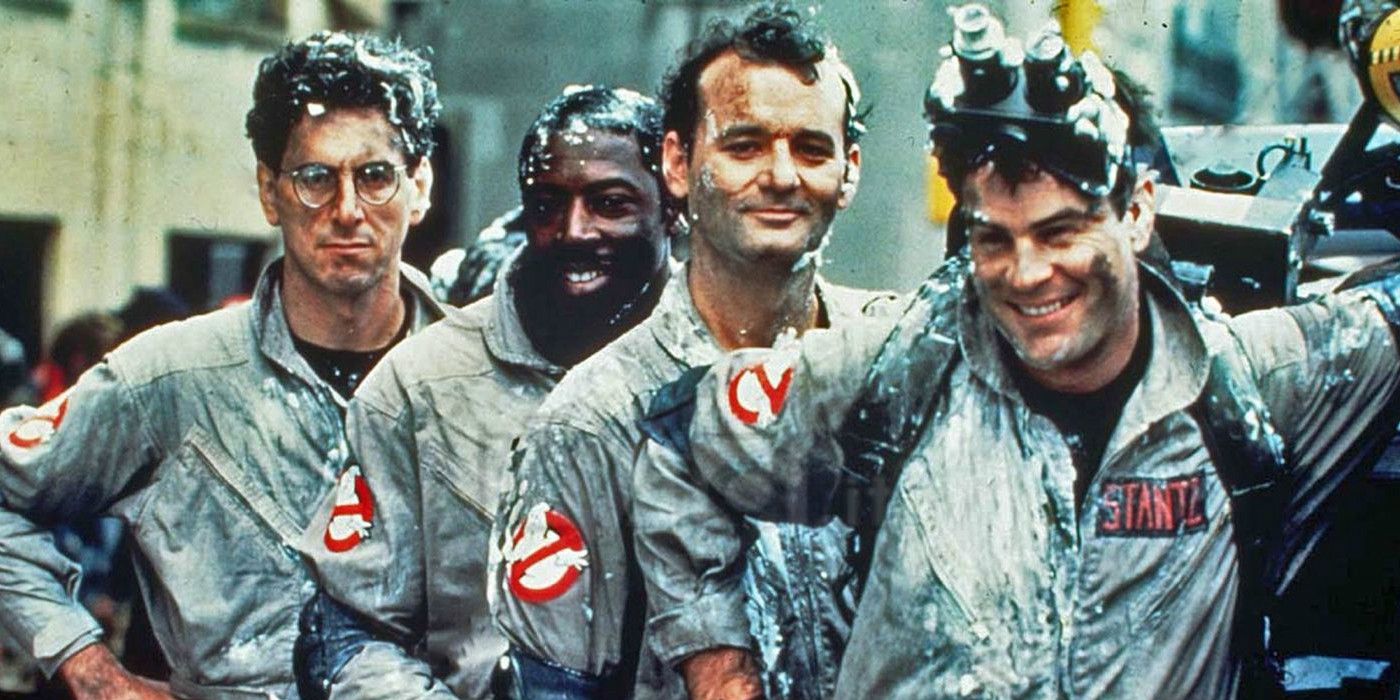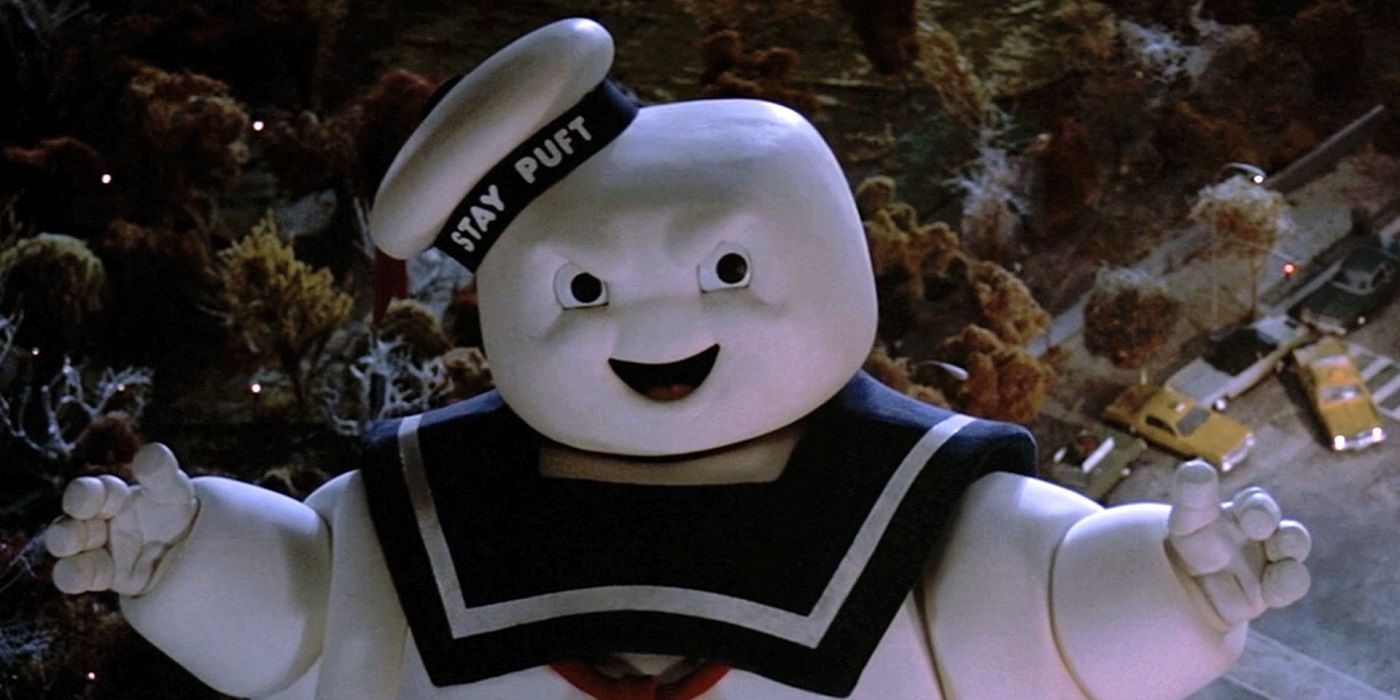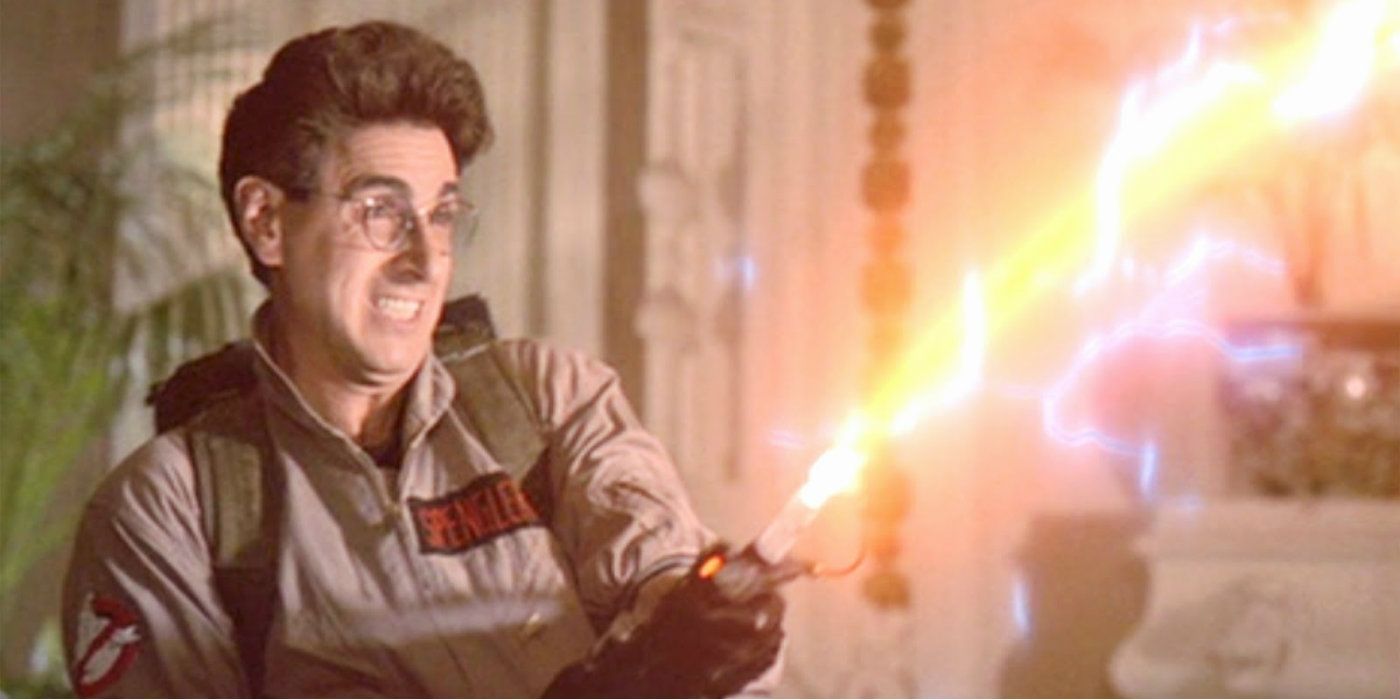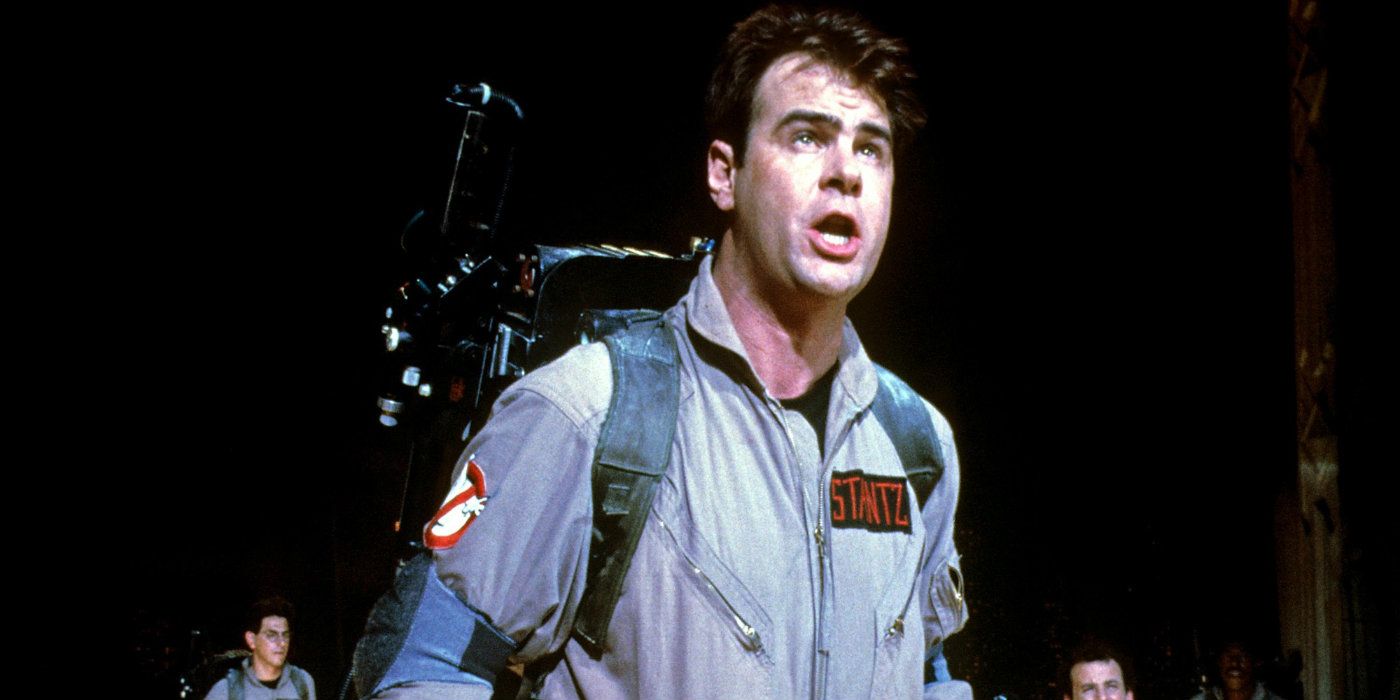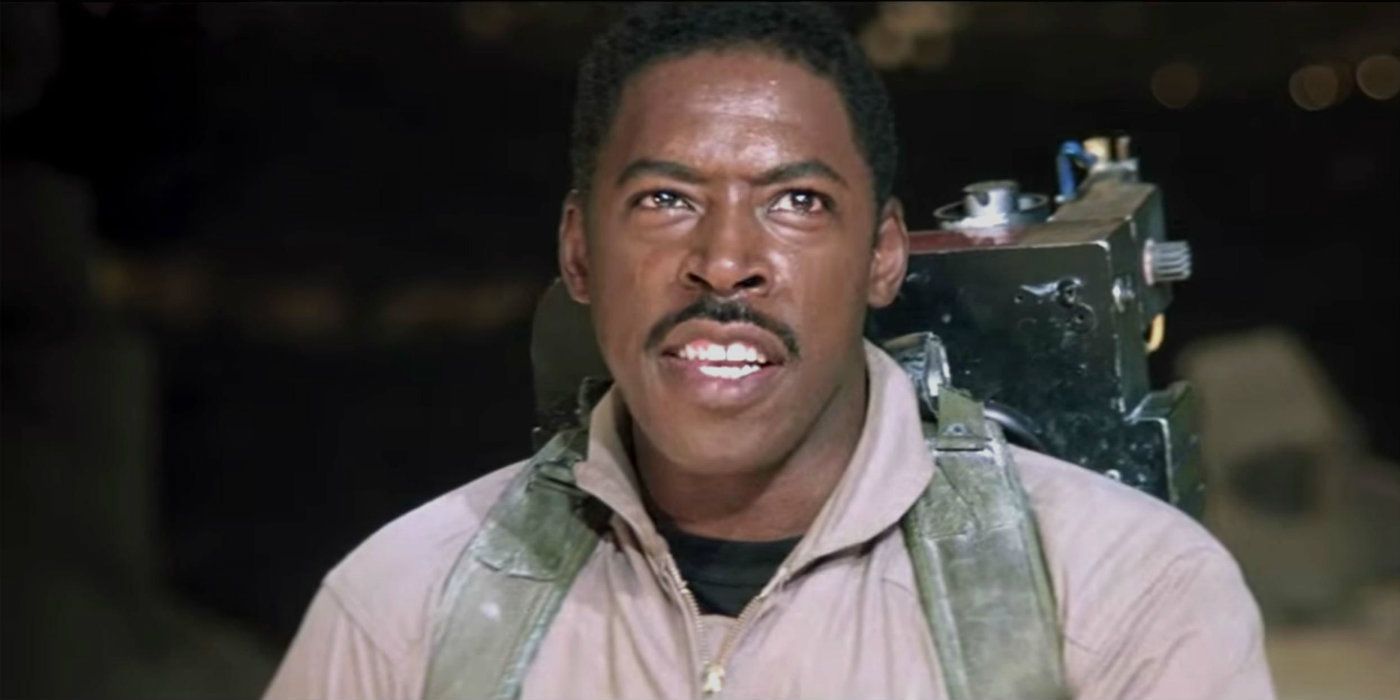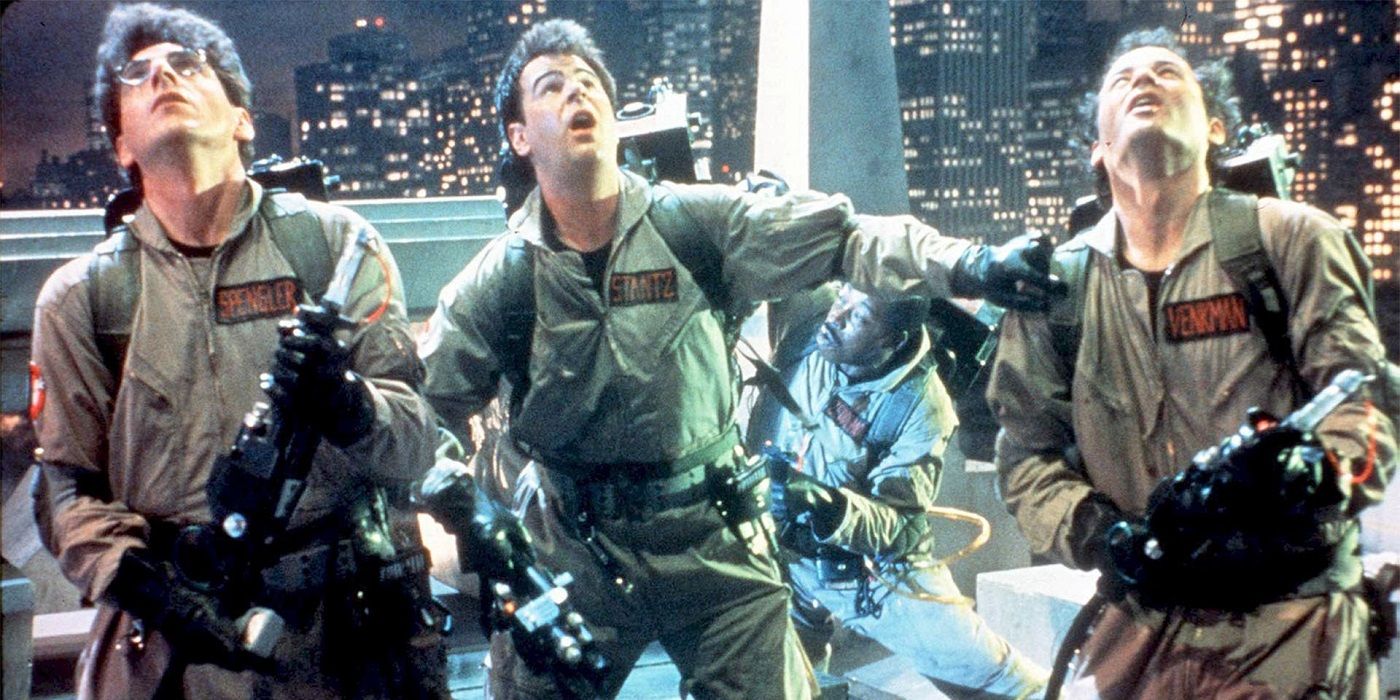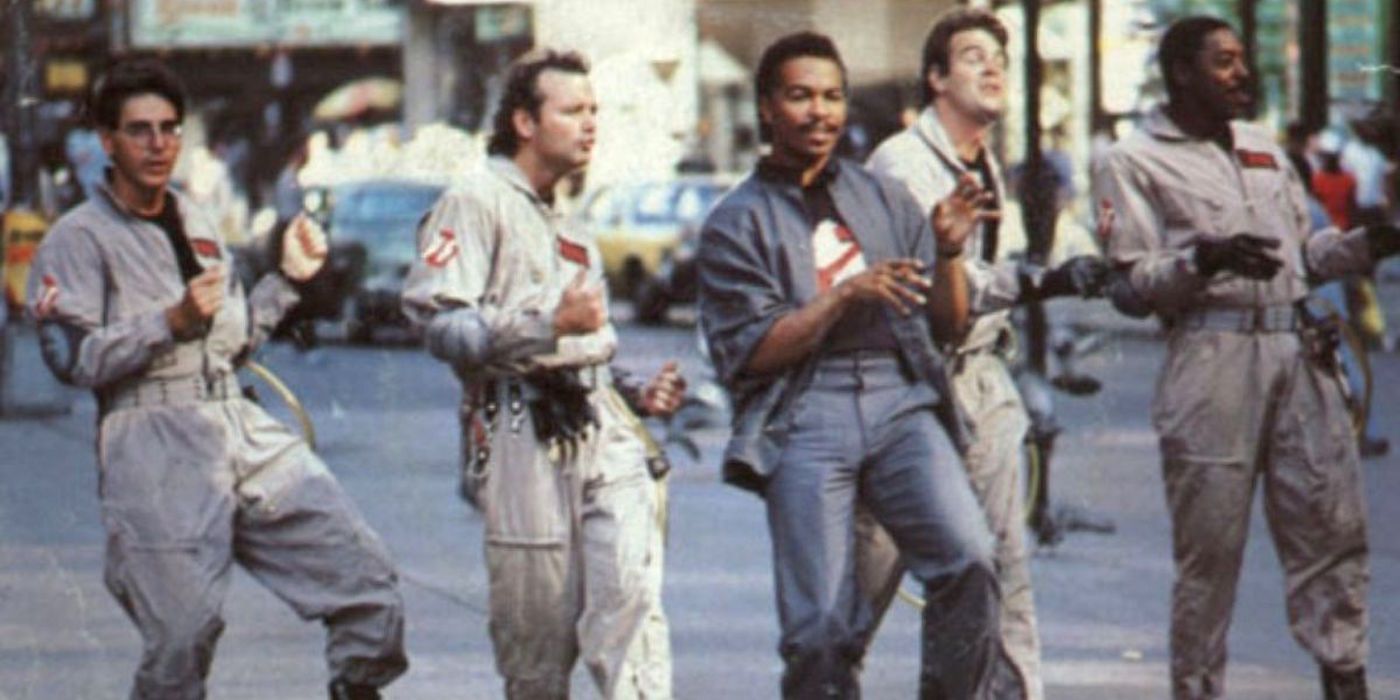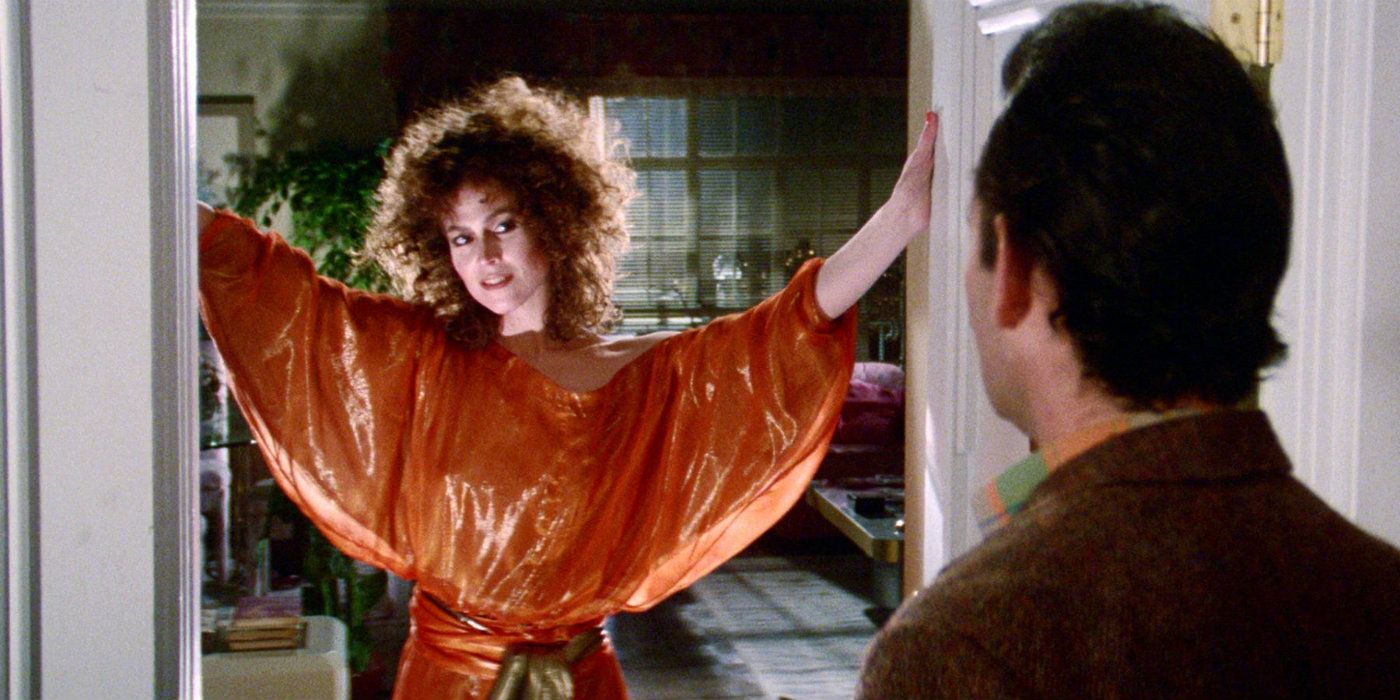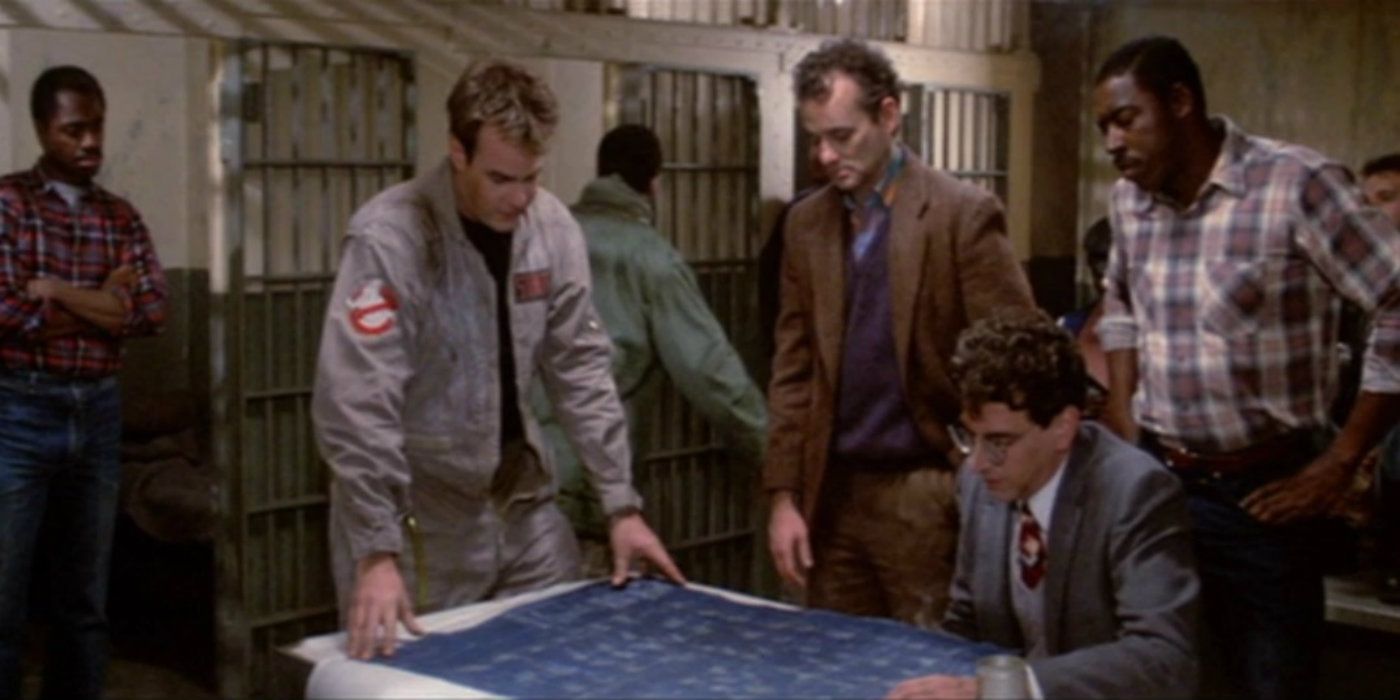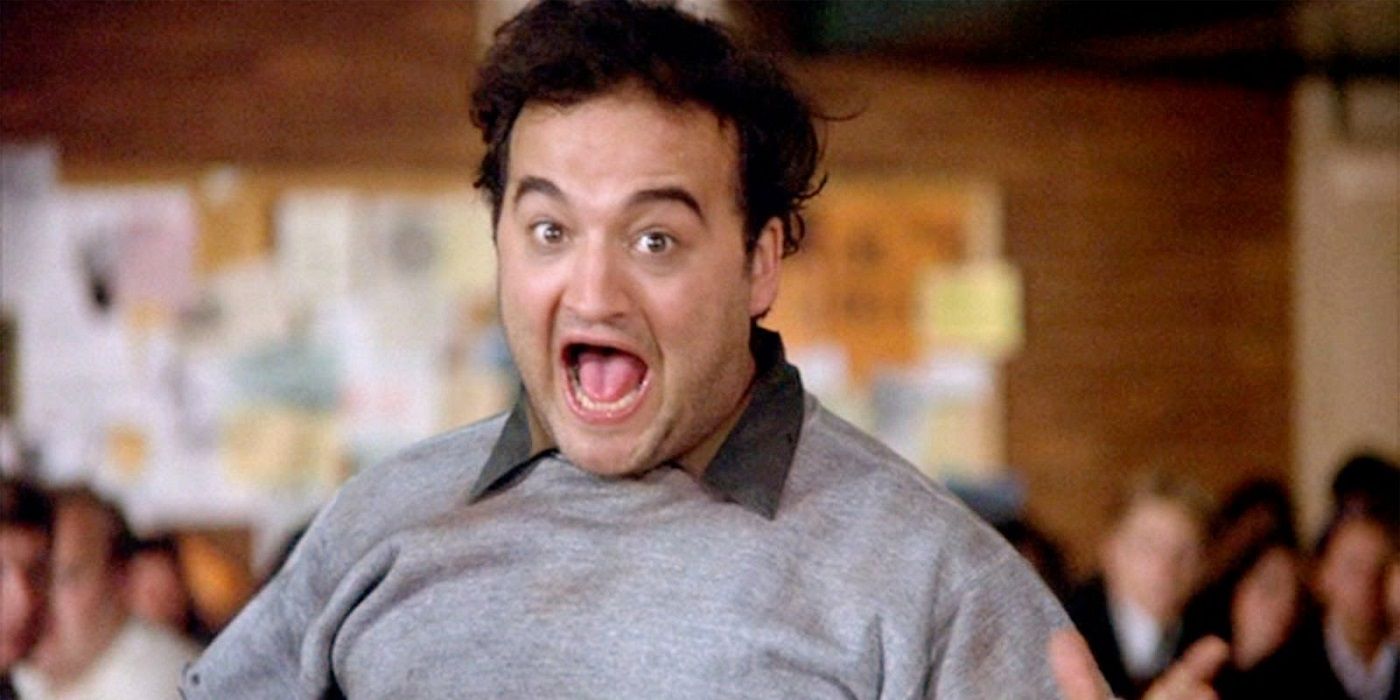1984’s Ghostbusters is one of the most classic and beloved comedies ever made. The story of a group of underdog scientists who detect a supernatural threat faced by New York and aren’t taken seriously by anyone is hilarious and timeless. The movie spawned a franchise, but none of the media that’s followed – except for maybe the awesome video game, which allowed fans to actually become a Ghostbuster – has ever lived up to the original’s promise. However, it didn’t have a particularly smooth journey to the screen, facing a litany of setbacks during production. So, here are 10 Behind-The-Scenes Facts About Ghostbusters.
The actors deviated drastically from the script
Dan Aykroyd and Harold Ramis filled the script for Ghostbusters with jokes, but the production ended up deviating greatly from how it was written. The writers expected this, since they were both from a background in improv comedy and so were a lot of their co-stars. There are ad-libbed lines in almost every scene, especially in the scenes with Bill Murray, who’s like a joke cannon.
The party scene in which Louis mingles with his guests, commenting on such hilariously mundane topics as the price of salmon, was shot in one continuous take and almost completely improvised by Rick Moranis.
The Stay-Puft Marshmallow Man was supposed to emerge from the ocean
The original plan for the Stay-Puft Marshmallow Man’s grand entrance in the third-act battle sequence was that he would come up from beneath the ocean, much like the rebooted Godzilla does, and stand next to the Statue of Liberty to get a size comparison. However, in the days before CGI effects, this scene proved too difficult to shoot and the filmmakers had to think of a different way to introduce the film’s most iconic ghoul (well, aside from maybe Slimer, or Zuul). This idea should’ve been resurrected for Paul Feig’s 2016 reboot, which had both the budget and the technology to accommodate it.
Harold Ramis never wanted to play Egon
When Harold Ramis was co-writing the screenplay for Ghostbusters, he had no intentions of even appearing in the film, let alone playing one of its main protagonists. However, once the script was done and the movie was going into production, he decided to play the role of Egon, after realizing he had unintentionally written the perfect role for himself. Jeff Goldblum John Lithgow, Christopher Lloyd, and Christopher Walken were all considered for the role of Egon before Ramis took it for himself. He later made a conscious decision to never smile when he was in character as Egon, and it’s easy to see that Ramis was ideal for the role in little performative touches like that.
The original story was a lot different
In the early drafts of the Ghostbusters screenplay, the story was very different. It was set in the future and there were three main guys who wore tactical gear as opposed to beige jumpsuits and whose weapons were like wands as opposed to proton packs. At the end of the movie, there were going to be Ghostbusters businesses opening up all over America, and they would become a new emergency service. Ivan Reitman estimated that this original script set in the future would have cost $300 million to shoot, and that’s in 1984 dollars. Even in 2019 dollars, that would place it as one of the most expensive movies ever made.
Zeddemore was a bigger character before Eddie Murphy turned it down
The role of Winston Zeddemore was largely reduced after Eddie Murphy turned down the part. This is why he only shows up halfway through the movie. Even with these cuts, the eventual actor Ernie Hudson was excited to play the character, because he still had a complex backstory as a demolitions expert for the Air Force.
However, right before shooting, the role was reduced even more and this backstory was excised because the studio asked the writers to expand Bill Murray’s role at the expense of Hudson’s role. Hudson still enjoyed playing the character, but he was a little disappointed by this, and understandably.
The original title was Ghostsmashers
Early drafts of the Ghostbusters script didn’t bear the title Ghostbusters at all. Rather, the movie was going to be called Ghostsmashers. Ghostbusters is an undeniably catchier and less tongue-twisting title than Ghostsmashers, so it’s a good thing he changed it – maybe the movie wouldn’t have been as successful as Ghostsmashers. Dan Aykroyd was inspired to write the script when he lived in a house that was apparently haunted by the ghost of Mamas and the Papas lead singer Cass Elliot. The house has since been bought by pop star Robbie Williams, who also claims to have spooked by Elliot’s spirit.
Ray Parker, Jr. struggled to write the theme song until he wrote it as an advertising jingle
After both Huey Lewis and the News and Lindsey Buckingham had turned down the filmmakers’ offer to write and perform the theme song for Ghostbusters, Ray Parker, Jr.’s services were recruited. However, his now-iconic theme didn’t come easily. He struggled to write it for weeks, and then when he saw the Ghostbusters business’ TV commercial from the movie, he had a brainwave and decided to write it as an advertising jingle, hence the lyrics: “If there’s something strange / in your neighborhood / Who ya gonna call? / Ghostbusters!” It’s like the song is trying to convince you to hire them.
Director Ivan Reitman provided the voice for Zuul
Zuul is the main antagonist in Ghostbusters. Despite the fact that he appears in various different forms throughout the film – a refrigerator, a demon dog, possessing Dana’s body, etc. – his voice is always the same, and that voice was provided by the movie’s director, Ivan Reitman.
Reitman doesn’t usually act, but after making two uncredited appearances in Ghostbusters (he voiced Slimer in addition to voicing Zuul), he made uncredited cameo appearances in two of his subsequent films: Ghostbusters II and No Strings Attached. It’s not ucommon for directors to appear in cameos in their films, and a lot of them, like Quentin Tarantino, give themselves more indulgent cameos than this.
The jail scene was filmed in a possibly haunted prison
The scene in which the Ghostbusters are locked up in a holding cell following the Gozer incident was shot in a prison that was reported to be haunted, a claim backed up by Dan Aykroyd. Apparently, the film stock from that shoot day ended up inexplicably covered in scratches. It’s thought that the ghosts left them there. The filmmakers feared that the scratchy footage would be unusable, and the crew really, really didn’t feel like returning to the haunted jailhouse, so they were relieved when the editor was able to cut around the scratched film and no reshoots were required.
John Belushi was slated to star in the movie before his death
When Dan Aykroyd started working on the script for what would eventually become Ghostbusters, his top choice to star in the movie was his Saturday Night Live co-star John Belushi. The two had made The Blues Brothers together a few years earlier and were eager to collaborate on another movie. Belushi was up for the movie, and was excited to be a part of it, but sadly, the comedy legend passed away before it went into production. This caused a major setback for Ghostbusters, which would’ve been doomed if the script hadn’t been reworked and Bill Murray didn’t step in to star in Belushi’s place.

